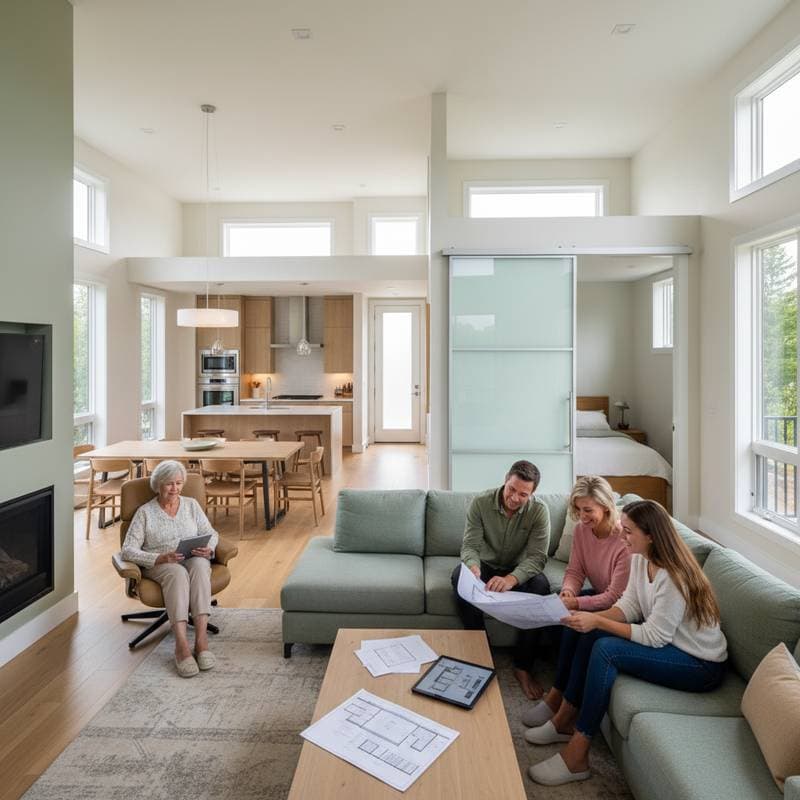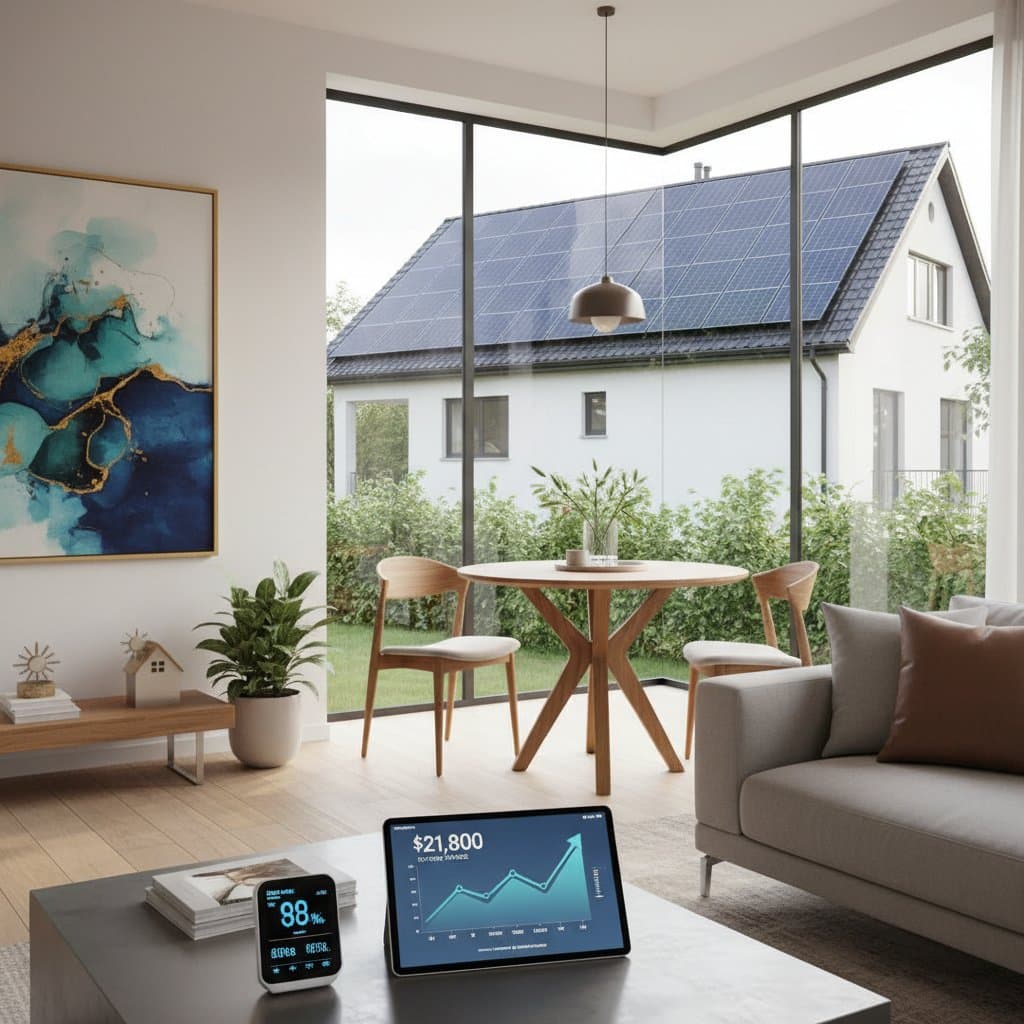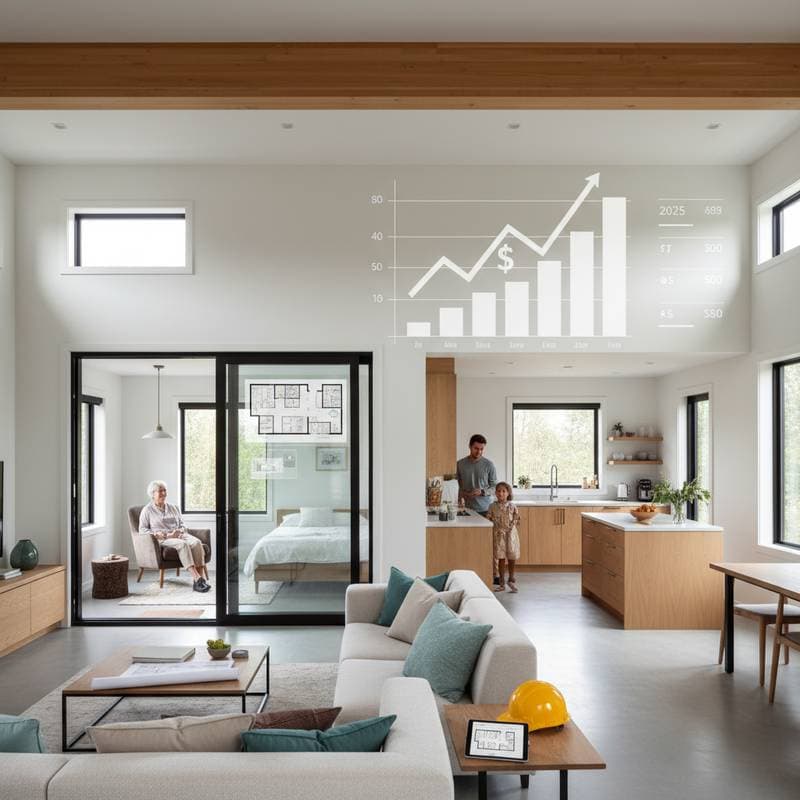Understanding 2025 ADU and Backyard Studio Permit Costs
Homeowners embarking on an accessory dwelling unit (ADU) or backyard studio project frequently overlook the financial and temporal demands of the permit process. These requirements can extend over several weeks, involve multiple submissions, and inflate budgets beyond initial projections. This guide provides detailed cost breakdowns, factors influencing expenses, and strategies to streamline your timeline for a smoother construction phase.
Benefits, Drawbacks, and Ideal Applications
Benefits:
- Establishes legal status, supporting insurance coverage and enhancing resale potential.
- Guarantees adherence to essential fire safety, seismic, and energy efficiency standards.
- Safeguards long-term property value and facilitates future financing options.
Drawbacks:
- Introduces additional upfront expenses and delays in the planning stage.
- Imposes restrictions on unit dimensions, elevation, and occupant limits in certain municipalities.
- Risks postponements due to overlooked details in submitted documents.
Ideal Applications:
- For owners seeking to create income-generating rental spaces or permanent additional living areas.
- On sites with straightforward utility connections and sufficient boundary clearances.
- Properties predesignated for residential accessory structures under local zoning.
Navigating the Permit Process Step by Step
Prepare with essential safety equipment, such as gloves, protective eyewear, and a dust mask, particularly during site measurements or utility trenching.
- Initial Zoning Consultation: Schedule a meeting with local planning officials or access their digital platform to verify boundary offsets, maximum elevations, and parking mandates.
- Plan Development: Engage a designer or architect experienced in ADU applications. Comprehensive drawings should cover foundations, structural framing, mechanical, electrical, and plumbing systems, plus site drainage plans.
- Application Submission and Initial Fees: Submit electronic documents or provide three printed copies. Cover the preliminary evaluation charge, typically comprising 30 to 50 percent of the overall permit expense.
- Document Review Phase: Municipal experts assess alignment with building codes, fire safety protocols, and infrastructure capacity. Anticipate one to three feedback iterations for corrections.
- Final Approval and Payment: Upon clearance, settle outstanding balances. Receive authenticated blueprints and inspection documentation from the authority.
- On-Site Verifications: Schedule checks for preliminary framing, utility installations, insulation placement, and a concluding overview. Retain all verification records for insurance claims and builder warranties.
For a basic studio, the process averages four to twelve weeks. Larger ADUs may require six to sixteen weeks, depending on complexity and local workload.
Common Pitfalls and Prevention Strategies
Avoid submitting partial documentation, which often leads to repeated evaluations and extended waits. Double-check adherence to specific boundary and elevation guidelines in your area. Coordinate early with utility providers for gas, water, and electricity to prevent surprises.
Do not lowball the duration of the review stage, and always allocate funds for potential school district or community impact assessments. A single oversight at the outset might push back approvals by several weeks. Review your jurisdiction's current fee structure prior to locking in any design elements.
Deciding Between Professional Assistance and Self-Management
Apply the DIY Gate framework to evaluate your readiness for handling permits independently or engaging experts.
Capability Assessment: Proceed with self-management if you possess skills in interpreting technical drawings, grasping fundamental structural and electrical regulations, and operating digital submission systems.
Risk Evaluation: Opt for a licensed professional if the project involves natural gas lines, sewage systems, or modifications to weight-bearing elements.
Resource Check: Delegate design tasks if you lack precision tools like surveying equipment or computer-aided design software.
Self-directed efforts reduce outlays but may consume twice the projected time. Services from permit specialists or integrated design-construction teams range from $1,000 to $3,000, covering submissions and adjustments. This investment proves valuable for those with constrained schedules.
Permit Bid Comparison Table
| Line Item | Scope Description | Contractor A | Contractor B | Contractor C | Variance Factors |
|---|---|---|---|---|---|
| Design and Drafting | Complete ADU documentation | $3,400 | $2,900 | $3,100 | Variations in detail specifications |
| Permit Management | Filing and follow-ups | $1,200 | $800 | $1,100 | Influenced by revision frequency |
| Structural Engineering | Certified computations | $900 | $1,100 | $950 | Inclusion of geotechnical analysis |
| Utility Arrangements | Connections for water, sewer, power | $1,800 | $2,300 | $2,000 | Affected by proximity to services |
Solicit proposals with precise project outlines. Insist on documented schedules and limits on amendment cycles to curb unforeseen fees.
Project Preparation Checklist
| Category | Essential Actions |
|---|---|
| Equipment Needs | Measuring tape, spirit level, distance wheel, blueprint software |
| Competency Areas | Blueprint interpretation, code familiarity, electronic filing |
| Protective Items | Work gloves, safety goggles, respiratory mask |
| Required Approvals | Structural, electrical, plumbing, HVAC, earthwork permits |
| Preliminary Steps | Property assessment, geotechnical testing, service line plotting |
| Environmental Factors | Steer clear of rainy seasons or subzero conditions for base preparations |
Advancing Your ADU Project Successfully
Start by obtaining the latest fee listings from your local building office and inquiring about exemptions for compact ADUs on impact charges. Select a designer with a track record of approved local submissions, steering clear of off-the-shelf templates. Factor in extended review periods and reserve at least 10 percent of your budget for permitting contingencies.
A thorough permit history bolsters your investment's durability. It secures validity for insurance policies and streamlines property transfers. Moreover, organized project files simplify ongoing upkeep and expansions down the line.
View permitting as an integral component of construction, not an obstacle. This perspective accelerates approvals and ensures your ADU or studio endures as a valuable asset for years to come.



